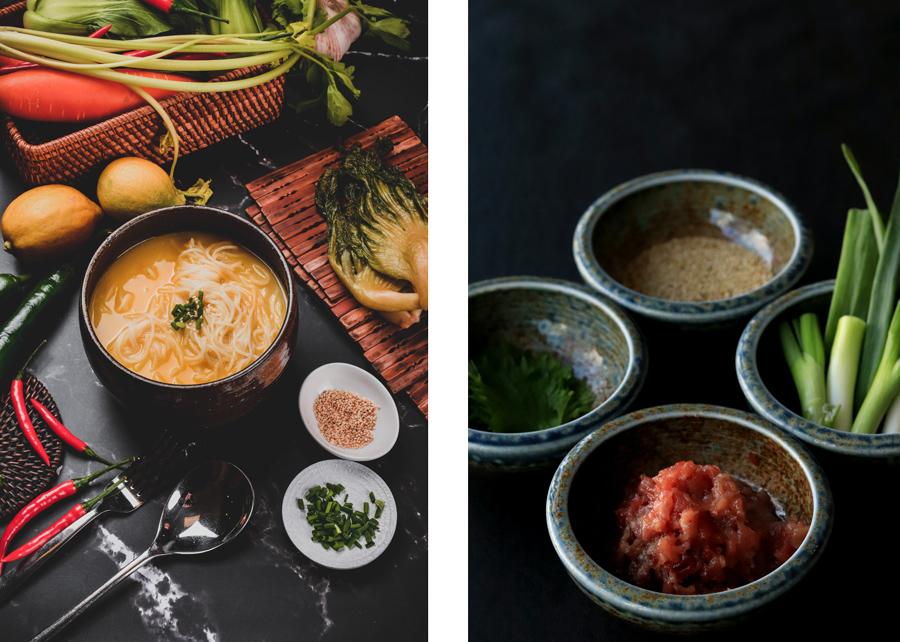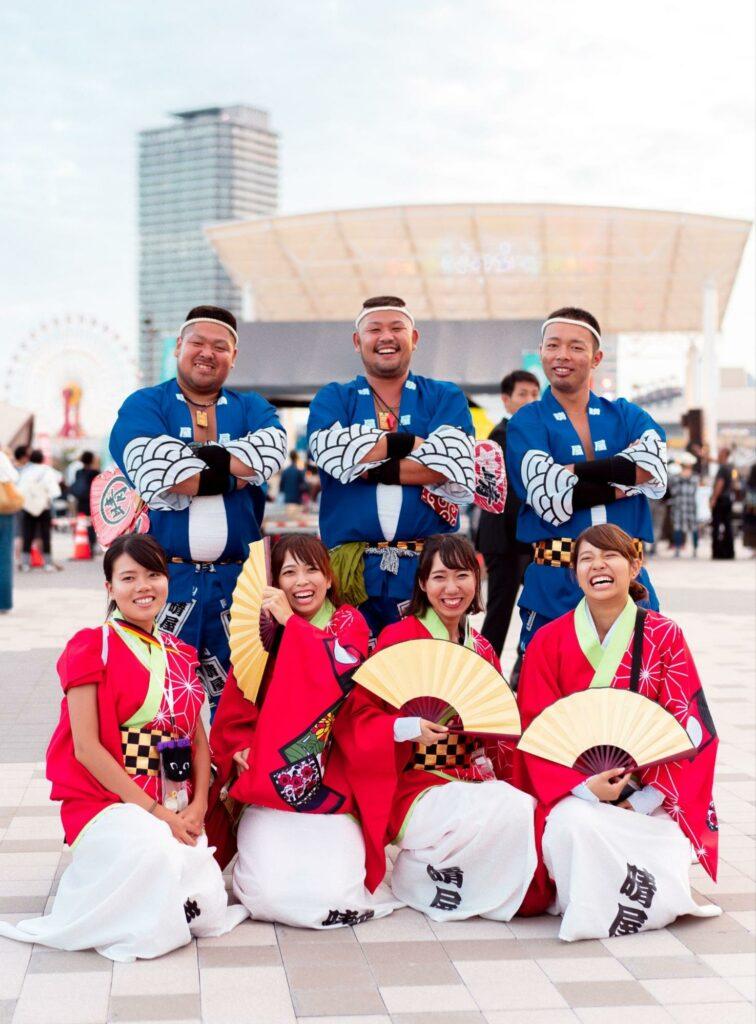The Japanese are renowned for their health, longevity, and practice of well-being. Travel with us to the land of the rising sun as we uncover the secrets behind the Japanese people’s extended lifespans through an examination of their nutrition, culture, and exercise regimens. We’ll also look at how we might apply Japanese teachings about how to live longer. Read on to discover the fascinating world of the Japanese and learn the secrets to achieving longevity and well-being, Japanese style.
The Japanese Diet

The traditional Japanese diet is a testament to the close relationship between nutrition and nature. It is a gastronomic journey that honours the abundance of each season, using locally produced, fresh products that not only tempt the taste senses but also encourage long life and excellent health.
The Japanese diet places a strong focus on using fresh, in-season produce. This ensures sure that every meal is a colourful tapestry of tastes, colours, and textures, as well as a representation of the always-shifting rhythms of nature. The Japanese have perfected the art of synchronising their meals with the ebb and flow of the seasons, from the delicate cherry blossoms of spring to the sturdy root vegetables of winter.
As a basic item, rice—often regarded as the cornerstone of Japanese cuisine—takes centre stage in the Japanese kitchen. It supplies food and energy and acts as a warming and nourishing foundation for a variety of cuisines. Fish plays a significant role in the Japanese diet alongside rice, especially types high in omega-3 fatty acids like salmon, mackerel, and sardines. Eating fish delivers cardiovascular advantages, promotes cognitive health, and adds to a diet with a variety of proteins.
The Japanese diet is also heavily reliant on vegetables, which are abundantly available in a wide variety of vibrant and nutrient-dense varieties. The Japanese diet is a veritable rainbow of plant-based goodness, with everything from leafy greens like spinach and kale to root vegetables like daikon radish and sweet potatoes. The necessary vitamins, minerals, and antioxidants found in these veggies are proven to support the immune system and enhance general well-being.
Tofu, tempeh, and miso are just a few examples of soy products that are embedded in the Japanese diet. In addition to being adaptable and high in protein, soy also has the advantage of being low in saturated fat. It has been connected to a decreased risk of cancer and heart disease.
A favourite ingredient in Japanese cuisine is seaweed, a nutritional powerhouse. Seaweed has a distinctive umami flavour and is rich in minerals, vitamins, and antioxidants. It also has a number of health advantages, including increased thyroid function and improved gastrointestinal health.
A well-balanced and nourishing diet is based on the Japanese food culture’s emphasis on fresh, in-season ingredients and the inclusion of rice, fish, veggies, soy, and seaweed. By adhering to these guidelines, we can not only enjoy the culinary joys of Japanese cuisine but also tap into its potential to encourage health, vitality, and a closer relationship with nature.
How to Incorporate Japanese Dietary Principles

- Increase your intake of plant-based foods. Saturate your plate with a rainbow of vegetables by including leafy greens, cruciferous vegetables, and colourful variety. Try typical Japanese veggies like edamame, kabocha squash, and daikon radish.
- Choose fish over meat as your preferred protein source. Focus on omega-3-rich varieties like salmon, mackerel, and trout. To benefit from the nutritional benefits of fish, aim for at least two servings each week.
- Reduce your intake of processed meals and sweets, which are frequently loaded with chemicals, preservatives, and excessive amounts of refined sugar. Fresh, minimally processed foods are highly valued in the Japanese diet because they let you enjoy the food’s original qualities and get health advantages.
- Incorporate fermented foods into your diet. Probiotics, or good bacteria, are abundant in fermented foods like miso, soy sauce, pickles, and natto and improve immunological health and digestive health. Include these foods as sides, condiments, or as a component of traditional Japanese recipes.

Cultural factors greatly influence the general health and longevity of the Japanese people. Let’s analyse four important cultural aspects that support their health and vitality:
The Importance of Balance and Mindfulness
The Japanese practice of “Hara Hachi Bu” encourages people to eat until they are 80% satisfied. It is mirrored in the Western world by the idea of mindful eating. The Japanese avoid overeating and encourage improved digestion by paying close attention to their bodies’ cues to eat and when they are satisfied. This routine guards against the harmful effects of consuming too many calories and helps maintain a healthy weight. Adopting mindful eating promotes thankfulness and awareness of the nutrients that food gives by allowing for a closer relationship with the food that is eaten.
The Japanese place a priority on maintaining a delicate balance between work and play. They place a high value on having fun, spending time with loved ones, and doing things that make them happy and relaxed. This well-rounded way of living lowers stress levels and promotes general well-being. The Japanese establish a healthier work-life balance by setting limits and allocating time for relaxation and recharge. This limits the harmful effects of prolonged stress on their health.
Social Networks and Networks of Support
Japanese culture places a high value on interdependence and community. The support networks within Japanese society, which range from tight-knit communities to extended family networks, contribute to the well-being and longevity of its citizens. Strong connections foster a sense of social connectivity and belonging, which has been linked to a host of health advantages, including a reduction in the prevalence of mental health issues and an extension of life expectancy.
Regular social interactions offer emotional support and a feeling of purpose, whether they take the form of community events or get-togethers with friends and family. Developing social ties and a sense of community can offer emotional support, lessen feelings of loneliness, and promote general well-being and lifespan.
Including Mindfulness or Meditation Practices
The Japanese approach to stress reduction and overall well-being includes mindfulness and meditation. People who spend time in meditation or mindfulness practices can create a stronger sense of peace, lower their stress levels, and sharpen their minds. Grounding oneself, promoting inner calm, and enhancing present-moment awareness are all possible benefits of practices like Zen meditation (Zazen) and mindful breathing.
Adopting leisure pursuits and activities that encourage relaxation
Another cultural component of the Japanese way of life is the adoption of leisure pursuits and activities that encourage relaxation. The Japanese have great respect for activities that foster tranquillity and offer a break from daily stressors, whether it is learning calligraphy, caring for a Zen garden, or taking part in tea ceremonies. You can reduce stress, improve well-being, and cultivate a sense of fulfilment by adopting hobbies and investing time in pursuits that make them happy and relaxed.
How to Incorporate Japanese Cultural Principles

- Practice “Hara Hachi Bu” by paying more attention to your eating patterns. Eat carefully and relish each bite while paying attention to your body’s signals of hunger and fullness. Keep your attention on your meal and away from any distractions, such as electronic gadgets or television.
- Adopt a balanced lifestyle by finding strategies to balance your professional and personal lives. Give leisure time, hobbies, and quality time with loved ones a top priority. Establish boundaries between your personal and professional lives, allowing yourself time for rest, self-care, and engaging in things you enjoy.
- Develop a meditation or mindfulness practice by allocating a short amount of time each day for these activities. Make a place for yourself where you may relax, pay attention to your breathing, be mindful, and develop inner peace.
- Take part in relaxing activities: Look for pastimes and pursuits that will help you relax and feel calm. For example, you could go gardening, painting, doing yoga, going on nature walks, or taking part in tea ceremonies.
- Develop meaningful relationships and cultivate your social connections to foster social bonds. Join clubs or groups based on common interests, get involved in community events, and try to make time for friends and family. Build a support network to increase your sense of belonging and create opportunities for frequent social connection.
- Adopt a simple, minimalist lifestyle by incorporating ideas from Japanese minimalism. Clean up your living areas, establish a calm atmosphere, and adopt a minimalist way of thinking. Place an emphasis on quality rather than quantity and surround yourself with things that make you happy and serve a purpose.
- Take time to regularly engage with nature. Go to parks, gardens, or other natural areas to appreciate the beauty and peace of nature. Enrich your mind, body, and soul by spending time in nature as you engage in Shinrin-yoku, also known as forest bathing.
The Japanese Way of Fitness

The Japanese approach to fitness emphasizes regular exercise and a holistic view of health.
Japanese culture places a strong emphasis on everyday mobility, which promotes regular physical activity. Walking is a popular form of exercise. The Japanese place a high value on moving over the course of the day, whether it is by walking to work, strolling through parks, or partaking in “forest bathing” in the presence of nature. This routine enhances general well-being, supports weight management, and boosts cardiovascular health.
Taijiquan, tai chi, and yoga are examples of traditional activities that have their roots in Japanese culture. The calm, flowing motions of tai chi help to increase balance, flexibility, and mental clarity. It is frequently practised in parks or other public areas.
Yoga, which emphasizes postures, breathing, and meditation, is popular due to its strength-, flexibility-, and stress-reduction-promoting physical and mental effects. Numerous yoga studios provide a variety of styles, enabling people to select a practice that fits their preferences and objectives.
These age-old forms of exercise promote mindfulness and the connection between the mind and body in addition to improving physical health. They are frequently practised in group settings, which fosters a sense of support and camaraderie.
Gyms have become extremely popular in Japan in recent years. Many people are now flocking to gyms to engage in resistance training and cardiovascular workouts. A large number of people also set up home gyms, allowing them to work out at any time in the privacy of their own homes.
How to Incorporate Japanese Fitness Habits

- Make walking a priority by including more of it in your everyday activities. Go for a leisurely stroll in a park, take the stairs rather than the elevator, or walk to local attractions.
- Consider bicycling or taking the bus or train to work. This encourages more physical exercise while cutting down on inactive time.
- Take up, Tai Chi. Look for local classes or internet resources to study and practice this calming and fluid martial art. Balance, flexibility, and mental clarity are all enhanced by tai chi.
- Practice Yoga. Yoga fosters a connection between the mind and the body while promoting strength, flexibility, and stress reduction.
- Look for local sports groups or associations that provide team sports like soccer, tennis, or martial arts. This offers a chance to interact with people, create social bonds, and maintain motivation.
- Attend group exercise classes. These sessions, which range from circuit training to dancing, provide a controlled workout atmosphere and an opportunity to connect with like-minded people.
- Exercise mindfully by paying attention to your breath, your body, and the current moment as you move. Be attentive to your actions and practice mindfulness to develop a sense of serenity and focus.
- Incorporate mindfulness into your regular strolls by using all of your senses and taking in the scenery. Pay attention to your breath and your steps while taking in the sights and sounds of the environment.
Summary
Throughout this journey through Japanese diet, culture, and fitness practices, we’ve learned important lessons that can aid in our effort to live longer and in better health.
The Japanese provide a template for comprehensive well-being with their emphasis on natural, seasonally appropriate foods, entrenched awareness, balance in their cultural practices, and inclusion of regular movement and traditional exercises. We now understand how crucial it is to fuel our bodies with nutrient-dense foods, practice mindfulness, and life balance, cultivate social relationships, and prioritize regular exercise.
Take what you’ve learned about Japanese cuisine, culture, and exercise practices and begin applying them in your own life. Even the smallest adjustment can have a significant effect on your longevity and happiness.


















































